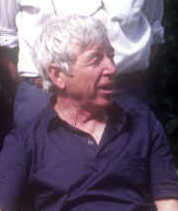Related Research Articles

Mountaineering, mountain climbing, or alpinism is a set of outdoor activities that involves ascending mountains. Mountaineering-related activities include traditional outdoor climbing, skiing, and traversing via ferratas that have become sports in their own right. Indoor climbing, sport climbing, and bouldering are also considered variants of mountaineering by some, but are part of a wide group of mountain sports.

A climbing harness is a device which allows a climber access to the safety of a rope. It is used in rock and ice climbing, abseiling, and lowering; this is in contrast to other activities requiring ropes for access or safety such as industrial rope work, construction, and rescue and recovery, which use safety harnesses instead.

A climbing shoe is a specialized type of footwear designed for rock climbing. Typical climbing shoes have a close fit, little if any padding, and a smooth, sticky rubber sole with an extended rubber rand. Unsuited to walking and hiking, climbing shoes are typically donned at the base of a climb.
The Yosemite Decimal System (YDS) is a five-part system used for rating the difficulty of walks, hikes, and climbs, primarily used by mountaineers in the United States and Canada. It was first devised by members of the Sierra Club in Southern California in the 1950s as a refinement of earlier systems, particularly those developed in Yosemite Valley, and quickly spread throughout North America.

George Herbert Leigh-Mallory was an English mountaineer who participated in the first three British Mount Everest expeditions from the early to mid-1920s.

Sir Christian John Storey Bonington, CVO, CBE, DL is a British mountaineer.
The Boardman Tasker Prize for Mountain Literature is an annual prize of £3,000 awarded by the Boardman Tasker Charitable Trust to an author or authors for "an original work which has made an outstanding contribution to mountain literature". The prize was established in 1983 in memory of British climbers Peter Boardman and Joe Tasker, both of whom wrote books about their mountaineering expeditions, after their deaths on the northeast ridge of Mount Everest in 1982. It can be awarded for a piece of fiction or non-fiction, poetry or drama, although the work must have been written in English. The prize is announced at the annual Kendal Mountain Festival.

Joseph Brown was an English mountaineer who was regarded as an outstanding pioneer of rock climbing during the 1950s and early 1960s. Together with his early climbing partner, Don Whillans, he was one of a new breed of British post-war climbers who came from working class backgrounds in contrast to the upper and middle class professionals who had dominated the sport up to the Second World War. He became the first person to climb the third-highest mountain in the world when he was on the 1955 British Kangchenjunga expedition. Some of his climbs were televised and he assisted with mountaineering scenes in several films; Brown died on 15 April 2020 at the age of 89.
Ian Clough (1937–1970) was a British mountaineer who was killed on the 1970 British Annapurna expedition led by Sir Chris Bonington to climb the south face of the Himalayan massif. He was later described by Bonington as "the most modest man I ever had the good luck to climb with" and "the kindest and most selfless partner I ever had."

Donald Desbrow Whillans was an English rock climber and mountaineer. He climbed with Joe Brown and Chris Bonington on many new routes, and was considered the technical equal of both.
Alan Paul Rouse was the first British climber to reach the summit of the second highest mountain in the world, K2, but died on the descent.

Clogwyn Du'r Arddu, or "Cloggy", is a north-facing rhyolite set of cliffs located on the northern flank of Snowdon mountain. Cloggy is considered to be one of the best traditional climbing areas in Britain, and has been called "The shrine of British climbing", and a "crucible for the development of most of the finest climbers in Britain and the scene of many of their finest achievements".

Oscar Johannes Ludwig Eckenstein was an English rock climber and mountaineer, and a pioneer in the sport of bouldering. Inventor of the modern crampon, he was an innovator in climbing technique and mountaineering equipment, and the leader of the first serious expedition to attempt to climb K2.
Dennis Gray was born 1935 in Yorkshire and started climbing when he was 11, after seeing the great Arthur Dolphin in action at Cow and Calf rocks on Ilkley Moor. He then climbed with a group who called themselves the 'Bradford Lads'. When called up for National Service Gray volunteered to work as a pay clerk and was posted to Manchester, where he was able to climb with the Rock and Ice club members on a regular basis. He has climbed with some of the best British climbers of the day; Tom Patey, Don Whillans, Joe Brown, Harold Drasdo, Robin Campbell, Eli Moriarty, Nat Allen, Slim Sorrell, Ron Moseley and many more.
Robin Smith was a Scottish climber of the 1950s and early 1960s. He died together with Wilfrid Noyce in 1962 on a snow slope in the Pamirs, during an Anglo-Soviet expedition, at the age of 23.

Dinas Cromlech or Dinas y Gromlech is a distinctive rhyolite rock outcrop at the Llanberis Pass, in Snowdonia, northwest Wales, which has a distinctive "open book" shape that is clearly visible from the road (A4086), and is very popular for rock climbers, and features in the history of the sport.
Michael "Mick" Burke was an English mountaineer and climbing cameraman.
Alex MacIntyre (1954–1982) was a British mountaineer in the 1970s. He is known for developing new climbing techniques that enabled ascents not previously accomplished.

Alpine climbing is a type of mountaineering that involves using any of a broad range of advanced climbing skills, including rock climbing, ice climbing, and/or mixed climbing, to summit typically large routes in an alpine environment. While alpine climbing began in the European Alps, it is used to refer to climbing in any remote mountainous area, including in the Himalayas and in Patagonia. The derived term alpine style refers to the fashion of alpine climbing to be in small lightly-equipped teams who carry all of their own equipment, and do all of the climbing.

The 1970 British Annapurna South Face expedition was a Himalayan climb that was the first to take a deliberately difficult route up the face of an 8,000-metre mountain. On May 27, 1970, Don Whillans and Dougal Haston reached the summit of Annapurna I, which at 26,545 feet (8,091 m) is the highest peak in the Annapurna Massif in Nepal. Chris Bonington led the expedition, which approached up a glacier from the Annapurna Sanctuary and then used rock climbing techniques to put fixed ropes up the steep South Face. Although the plan had been to use supplementary oxygen, in the event it was not possible to carry any cylinders high enough for the lead climbers to use on their summit bid.
References
- ↑ Ormerod, Alick, Whillans, Don (1971). Don Whillans: Portrait of a Mountaineer. Heinemann. p. 266. ISBN 978-0-434-86251-1.
{{cite book}}: CS1 maint: multiple names: authors list (link) - ↑ Perrin, Jim (22 August 2005). The Villain, Portrait of Don Whillans. Mountaineers Books. p. 91. ISBN 978-0-89886-986-6.
...in terms of a significant series of new climbs, sustained over a number of years and coincident with the very highest standard of the day, there would be few willing to argue with any conviction against the pre-eminence throughout the decade of the members of the Rock and Ice Club.
- ↑ Wells, Colin (2002). A Brief History of British Mountaineering. The Mountain Heritage Trust. p. 71. ISBN 978-0-903908-62-7.